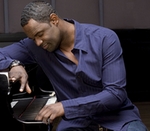Create Your Music
Easily learn music theory for:
- A musical career
- Earning money from your skills
- Teaching
- Developing your Artistry
1. Music Letters
Music theory uses the alphabet letters A through G:
This musical alphabet represents the sounds our instruments and voices produce. Sound is what music theory explores. Together, we'll improve our sound output.
Additional steps, or sounds, fall between these letters:
In the vast range of possible sounds, early instruments were limited to a single tone. A letter was assigned to that particular sound. Higher and lower sounds were also assigned letters, with sharps # and flats b representing the sounds in-between the letters (a, b, c, d, e, f, g).
2. Sharps and Flats
Sharp

A Sharp is like a nail that points up. It raises letters by a half step. The sound goes up, as from A (step) B. We'll name it A (sharp) B. Keep going up the musical alphabet:
We'll get to those missing steps later. Just know the sound is going up half steps, called Sharps. The symbol for Sharp in music is # (the number sign, or pound sign, or hash mark):
Flat

brian mcknight
A Flat is the tire that nail punctured. Just like a flat will deflate, and bring us down too, the sound goes down a half step. B (step) A now becomes B (flat) A, as the sound lowers the note by a half step. The musical alphabet downward:
Flat's symbol looks like a lowercase 'b':
3. Half Step Exceptions

kelly clarkson
Again, the steps between the letters are:
These steps are now either # Sharp or b Flat. The steps between ABCDEFG with Sharps and Flats:
BC , EF
There are no steps between B and C, and between E and F. This means when we play a B# (B sharp), we are playing the letter C. And when we play an E# (E sharp), we are playing an F.
B# = C , E# = F
CB , FE
Conversely, when we play a Cb(C flat), we are playing the letter B. And when we play an Fb(F flat), we are playing an E.
Cb = B , Fb = E
Therefore, both B to C, and E to F have no between steps:
We may remember the BC,EF exception, with the phrase:
Welcome all musicians!
Recommended reading: Sharp Flat Rule
The next page introduces a combination of half and whole steps to make scales.
